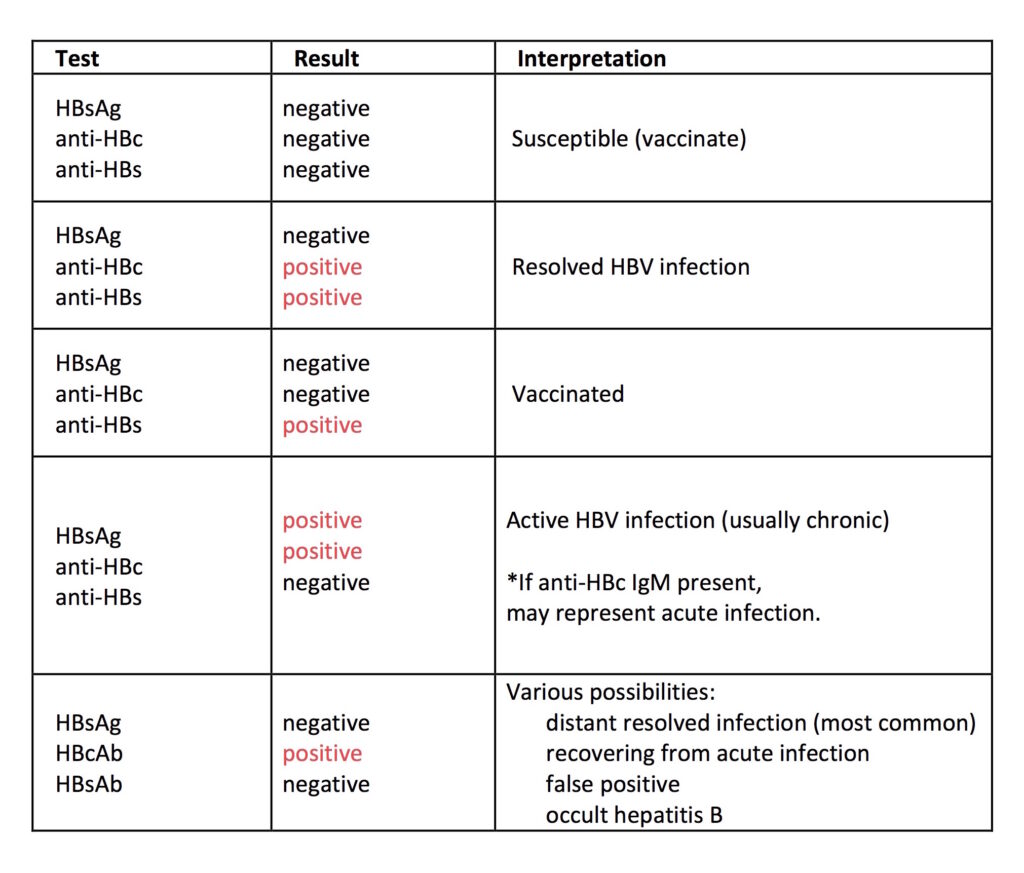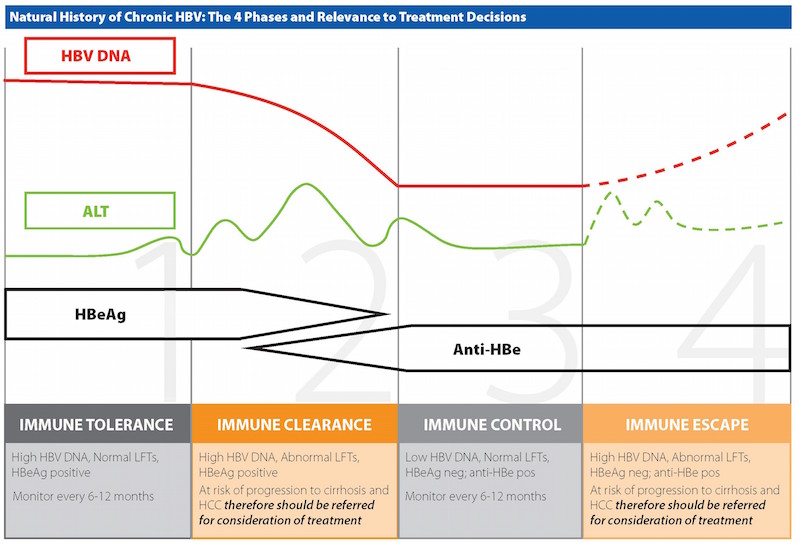Interpreting HBV serology can be a challenge.
The first step is to be systematic when initially ordering the tests. When testing for HBV infection, write ‘?HBV infection’ or similar in the clinical notes (as a guide to the pathology lab) and specifically request the following complete panel of tests:
HBsAg
anti-HBc
anti-HBs
With all three results, you can reliably interpret your patient’s HBV status in the vast majority of cases – and also avoid unnecessary vaccination.
A guide to interpreting HBV serology appears in the table below.

What about e antigen serology?
Testing for HBeAg and anti-HBe is not part of the diagnosic panel for HBV.
However, it is important in determining which phase of chronic HBV infection your patient is in – which is why e antigen serology should be part of the further tests which need to be ordered for all patients diagnosed with hepatitis B.
The phase of infection determines how much ongoing liver damage is occurring, and is used to help decide which patients need further investigation (e.g. liver biopsy) and whether they could benefit from antiviral treatment. A simple schematic of the phases of chronic HBV infection and when specific treatment is generally considered is shown below.

© ASHM 2015. Full resource available for download here.
Further details regarding indications for therapy are contained in the clinical guidelines available from the Resources for clinicians section of HepBHelp.
